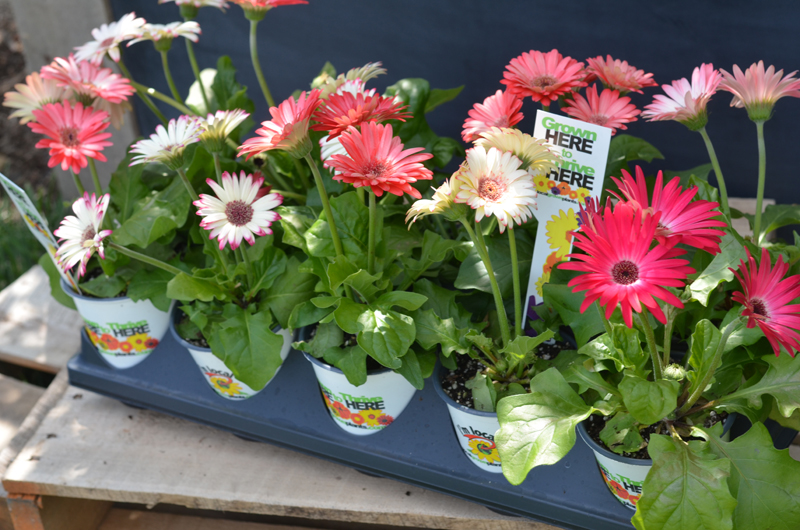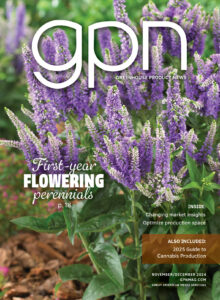
Branding — A Little Can Go a Long Way
For decades, most people considered a brand as just the name on a package, or a company’s logo. A brand was merely a utilitarian component of a marketing mix for which its sole purpose was identification. Today, however, as more and more companies enter the fray and competition intensifies not to mention the proliferation of social media and digital content the idea of a company’s brand and what it truly means has expanded exponentially.
Brand Differentiation
One company that has grasped the notion of branding better than others is Apple. When it launched its first Mac in 1976, it entered the congested world of PCs, where every computer looked and functioned the same. The only difference was the name on the “box.” Apple saw this as a huge opportunity to think bigger. An opportunity that provided fertile ground on which it would eventually establish itself as the second-largest information technology company in the world. With one of the most recognized brands in history.
To accomplish this amazing feat, Apple had to look at its brand in a totally different way. Beyond its name and logo, Apple sought to establish a position in the hearts and minds of likeminded people. To create a lifestyle experience hinged upon a fresh way of thinking. To create an emotional attachment with its customer base. To encourage buyers to boldly maintain loyalty regardless of cost, regardless of product availability and regardless of complications and miscues. A connection that runs so deep in the psyche of today’s consumer that it has even driven some to unabashedly decorate their bodies with Apple tattoos. And what did all this take? In two words brand differentiation.
Grower Differentiation
For growers, it’s no different. Sure, you might not have the deep pockets and manpower Apple has today, but that wasn’t always the case for them. If you recall, Apple was actually a garage start-up with little funding. But what it lacked in resources, it made up for with an unwavering commitment to delivering a unique experience for its customers.
A strong grower brand represents the promise that defines who it is, what it stands for, and what distinctive and meaningful products and services it delivers. It’s a promise customers can believe in one that’s built on genuine trust that the brand will live up to the grower’s promises at each and every turn. It’s a grower’s ability to stand out from the crowd that can lead to its long-term business success. Which is especially important, knowing how many growers are in the United States, all vying for the same kind of attention.
Grower differentiation can occur on multiple levels, all of which delivers benefits beyond simple awareness. Being different can mean, not only are your customers more mindful of you and your products, but as a result, they become more
interested. More engaged. More attached. More loyal. So they’ll come back to buy from you again and again. They are also more willing to pay higher prices for plants and flowers from a grower they trust. And more open to forgive you when you come up short. Bottom line: the more robust a brand, the stronger the, well, bottom line. Something all growers can appreciate. And something Apple has proven correct.
Product Appearance
While there are countless ways to enhance a grower’s brand, one of the most obvious ways to differentiate is to focus on product appearance. Beyond the beautiful plant or flower itself, a grower needs to look at the broader picture. To assess all the packaging and merchandising associated with its plants. Today, these seemingly inconsequential elements of the marketing mix actually command much greater brand responsibility, and offer up much greater reward than ever before.
One such element that contributes greatly to product appearance is the physical container your plants and flowers come in. Gone are the days when these pots just arrived in black or green. Growers are now able to select containers from a bevvy of colors in an effort to set their products apart from others. But brand differentiation doesn’t stop at the color of the pot.
With improvements to printing technology, containers can now be customized with full-color logos, bold photographs, and eye-catching graphics to highlight and reinforce a grower’s brand. That same technology can be applied to adhesive labels that are then applied to the containers too. Both approaches can also carry information that assists the consumer at the point-of-sale and educates them at the point-of-planting. Containers can be printed with interactive content through QR codes and distinctive URLs to drive consumers to additional information. Containers can also be produced in a multitude of surface textures and patterns that would make Vera Wang proud. All of which works to send consumers the all-important message of “Hey, look at me! I’m different. I’m the one you want to buy!”
“In today’s highly competitive environment, growers are always looking for ways to stand out. And containers are a perfect means of doing just that by broadcasting their brand message in a bold and colorful way. A message that can live well beyond the life of a given plant. Containers can not only convey a grower’s brand, but deliver other critical product information needed to educate and inform,” confirms Landmark Plastics VP of sales and marketing, Steve Beall.
The importance of the container branding is something that hasn’t been lost on the folks at Proven
Winners, which commissioned a study to validate the benefits packaging and merchandising have on horticultural sell through. The dramatic results speak for themselves, as the data showed that plants in branded containers outsold those in unbranded containers nearly 5 to 1. The study also concluded that consumers are drawn more to plants in branded packaging especially when combined with integrated point-of-purchase (POP) materials.
Another key element that can help differentiate and deliver a grower’s brand message is the plant tag. Like containers, tags were oft considered a utilitarian component of the packaging with the only purposes of defining what plant was contained in the pot, and how to care for it. But, similar to pots, today’s tags can actually do so much more.
From Pot to Tag to Display
“Establishing a brand is a function of exposure to it over time,” quips Gerry Giorgio marketing expert at MasterTag. “Since our business is seasonal, it’s important for growers to seize the opportunity they have at the point-of-sale (POS), where their brand message can really mean something. The more integrated information and visual stimulation provided to consumers at that point, the greater a grower’s chance of success,” continues Giorgio. “And if you work to get your messaging on all your POS components, it expands the real estate growers have to work with and gives them a greater brand voice”, concludes Giorgio.
Growers can also build their brand through its merchandising or POP materials at retail. These could include anything as fundamental as a hanging banner to something more sophisticated as an interactive end-cap display. Regardless of which direction you take, it’s important for all your materials to be well integrated. This means they should carry a consistent appearance through graphic design and color, as well as consistent messaging. By aligning your branding efforts, from pot to tag to display, growers are able to increase brand recognition among its customers, engage more of them and deliver the ultimate benefit: Sell-through.
“With a dramatic decline in the number of growers and garden centers, we wanted to be proactive rather than reactive. So we made a conscious effort to develop our brand as a way to set ourselves apart from generic plants sold through big box retailers,” states Kristine Milaeger Reisdorf, president of Milaeger’s, a hybrid grower/retailer based in Wisconsin. “And we definitely achieve greater sell-through with our branded materials.”
Milaeger’s has even taken things a step further than most growers. Creating its own line of potting soil and private labeled products, Milaeger’s has furthered its brand footprint, increased sales potential and proven that smaller independent growers can compete with national brands. As Reisdorf put it, “The more often you see a brand, the more often you’ll think of it and the greater the potential for loyalty.”


 Video Library
Video Library 



















